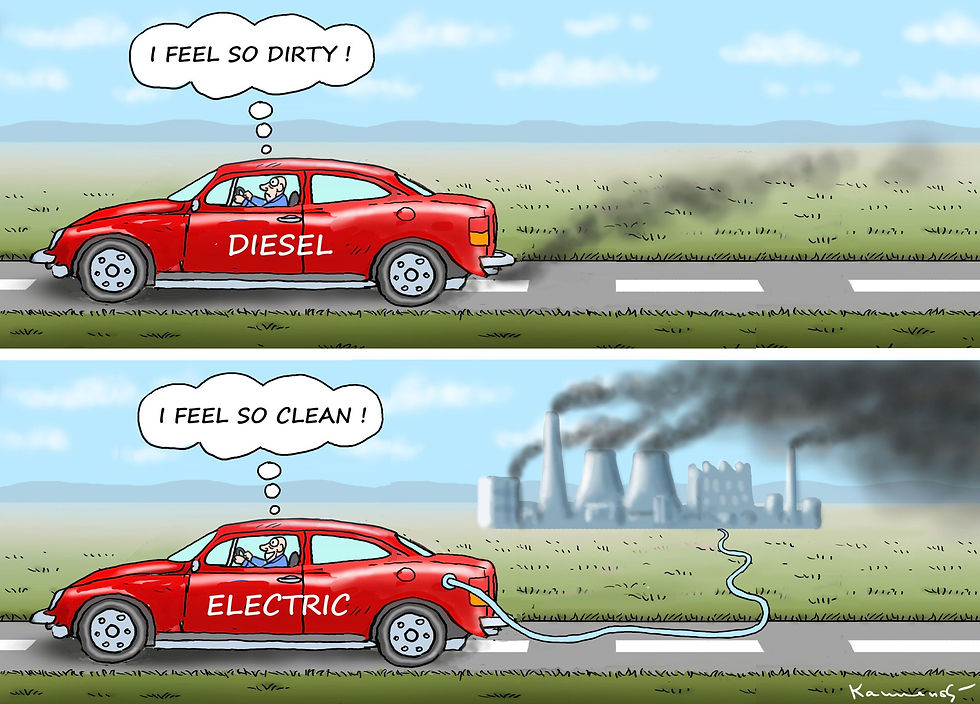Thermodynamics Says…
- Andrea Strzelec

- Nov 1, 2018
- 2 min read
Updated: Nov 2, 2018
...there is NO SUCH THING as a Zero Emissions Vehicle (ZEV).
When I see “ZEV” on a vehicle or hear someone say that “battery electric vehicles (BEVs) have no emissions” – it makes the professor in me want to hand them a big red F in The Thermodynamics of Life. ZEV is a political designation, not science.
One doesn’t need to have formal training in Thermodynamics to realize there is some fault in this logic – just common sense...Energy has to come from somewhere. That said, I’m almost certain that the average person knows more Thermodynamics than they realize. In fact, I can demonstrate that grade schoolers have a practical knowledge of the Laws of Thermodynamics, even if they don’t know what they are called. Most of them will have learned “Energy is conserved” in Science class by grade 4. And while the Second Law seems complicated, your favorite grade schooler probably also knows what happens to a cold soda left out on the kitchen counter, and to a steaming mug of hot chocolate left out on the same counter. They know that the soda would get warm and the cocoa would get cold...seemingly opposite effects, but an example of the Second Law at work!
Now that we’ve established the basics of the natural laws, or at least their implications – we can talk about why ZEV cannot be true scientifically. Let’s start with the idea that “Energy is Conserved” - this means that in order for the electric car to move, it needs energy, which is stored onboard in the battery (instead of in the fuel, like gasoline or diesel). But where does the battery get the energy from? From the wall outlet? But walls don’t magically generate electricity – the electric company does...from the Power Plant.
In the United States, about 70% of 1,704 GW of electricity produced annually (750 GW) is produced from Thermal/Fossil sources, namely coal and natural gas (https://en.wikipedia.org/wiki/Electricity_sector_of_the_United_States). This means that in order to create electricity, the plant burns the coal and natural gas to release thermal energy, which they mechanically convert into electricity (See: Rankine Cycle (https://en.wikipedia.org/wiki/Rankine_cycle) for a simple model of how this process happens). Since the electricity powers the battery, and the power plant makes the electricity, then there are emissions (from the burning coal and natural gas) associated with electric vehicles – they just aren’t happening locally, at the vehicle tailpipe. But since they are happening at the power plant, which is within the same atmosphere, they “count.” That is science.

Comments